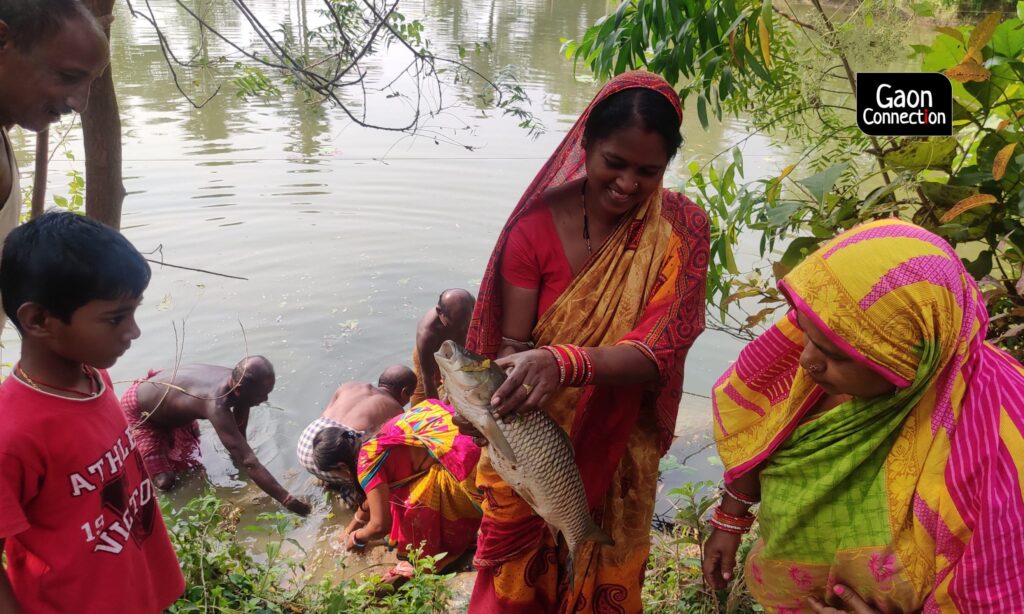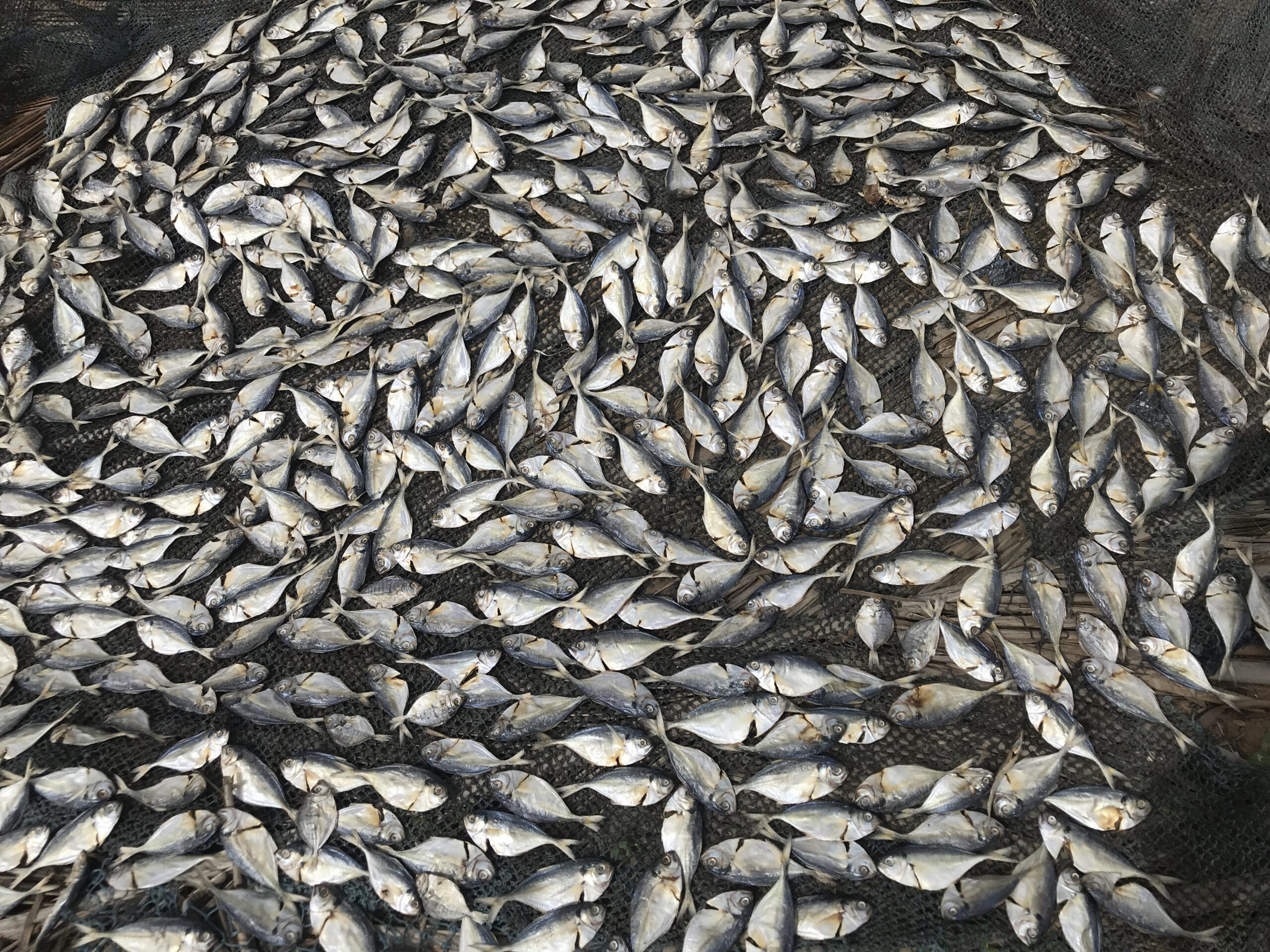India is one of the largest fish producing countries in the world and shares 7.58 per cent of the total global production. The importance of fisheries sector can be gauged from the fact that it contributes 1.24 per cent to India’s Gross Value Added (GVA) and 7.28 per cent (2018-19) to the agricultural GVA. Known as the country’s sunrise sector, fisheries has shown impressive growth with an average annual growth rate of 10.88 per cent during the last few years.
Despite high production, fish consumption in the country remains low. Average per capita fish consumption in India is 9 kilograms (kg) per annum against the global per capita fish consumption of 16 kg. The World Health Organization (WHO) recommends consuming 12 kg fish in a year. Fish is rich in protein and contains easily digestible high-quality proteins and healthy fats. It is also a unique source of essential nutrients, including iodine, vitamin D, and calcium and long-chain omega-3 fatty acids.

Keeping these things in mind, the Indian government is trying to promote the fisheries sector. Last year, the country produced 12 million metric tonnes (mmt) of fish, of which only 40 per cent came from the oceans and the rest was sourced from fish farming and inland water bodies.
Also Read: Rainbow trouts rain profits for farmers in Kashmir
Freshwater aquaculture
Fish farming or aquaculture is a simple farming technique to grow the fish in confined conditions in a pond. For successful fish farming, good quality fish seed should be stocked in well-prepared ponds having five to six feet water. These fishes are to be then fed daily with pellet feed or oil cake-based mash feed and reared for about 8-10 months.
After this, the fishes can be harveAverage per capita fish consumption in India is 9 kilograms (kg) per annumsted, sold to the consumers with a decent profit margin. The choice of the fish and the scale of operation depends on the market demand in the locality.
Freshwater aquaculture in India has evolved from a state of homestead activity in few pockets of eastern Indian states during the 1950s to the present state of a vibrant enterprise that has spread all over the country. The total inland fish production had witnessed a phenomenal increase from the mere 0.75 mmt in 1950-51 to 10.4 mmt in 2019-20. Indian major carps such as rohu, catla and mrigal and catfishes are the important fish species cultured in the country.

States like Andhra Pradesh and West Bengal developed their expertise in aquaculture and these two states produce about 40 per cent of the total inland fish production and exports to different parts of the country. The future of Indian aquaculture development is expected to be in the northern and eastern states where the water is plenty and largely unutilised.
Pradhan Mantri Matsya Sampada Yojana
To tap the immense potential for development of fisheries and for providing focused attention to the sector, the Government of India launched the Pradhan Mantri Matsya Sampada Yojana on September 2020. This scheme will ensure an estimated investment of Rs 20,050 crore up to the year 2025.
This national programme aims to increase the fish production in the country to 22 mmt by 2024-25. It also proposes to double the export earnings from the present Rs 46,662 crore (2019-20) to about Rs 100,000 crore by 2024-25.
India exports 11,49,341 MT of #Marine products during 2020-21; #Aquaculture sector performs better; uptick in tilapia and ornamental fish exports@DoC_GoI @CimGOI @PiyushGoyal @PIB_India
— DD News (@DDNewslive) June 3, 2021
DETAILS: https://t.co/tI4HSujmwS
According to Bhubaneswar-based ICAR-Central Institute of Freshwater Aquaculture (ICAR-CIFA), at present the fisheries sector suffers from a post-harvest loss of about 20-25 per cent. The Pradhan Mantri Matsya Sampada Yojana aims to reduce it to less than 10 per cent. This institute is the premier research institute in India which undertakes research on basic, strategic and applied aspects of freshwater aquaculture. It has five regional centres.
Meanwhile, the mean productivity level of the existing aquaculture ponds in the country remains as low as three tonnes per hectare, which can be easily increased to five tonnes per hectare through adoption of scientific freshwater aquaculture practices, informs the Institute of Freshwater Aquaculture.

The Pradhan Mantri Matsya Sampada Yojana is expected to generate 1.5 million additional employment opportunities in the country’s fisheries sector, while the fish consumption in the country is also increased to 12 kg per capita from the present 5 kg per capita.
Also Read: You relish prawn often? Thank the many farms, and farmers’ heavy toil
Overcoming COVID challenges and learning fish farming from home
Capacity building is very important for increasing the adoption of scientific technologies at field level and large number of fish farmers should be trained on specific technology modules on scientific aquaculture.
But, there are several existing challenges. Many state governments do not have enough humanpower to provide technical advisory services to the farmers. The Krishi Vigyan Kendra network, which has the 700 plus centres across the country, has only about 120 fishery scientists working. This results in a poor dissemination of technologies to the farmers from the research institutes.
The COVID-19 pandemic has further worsened the situation as farmers could not attend the training classes in the research institutes and update their skills.
To address this issue, ICAR-CIFA has developed an Android mobile app — Matsya Setu — to disseminate the aquaculture technologies to the farmers through online mode. Like any other commercial online course apps, this virtual fish farming app has species-wise/subject-wise self-learning video modules, where renowned aquaculture experts explain the basic concepts and practical demonstrations on breeding, seed production and grow-out culture of commercially important fishes.
Union Minister @girirajsinghbjp launches the online course mobile app “Matsya Setu” for fish farmers
— PIB India (@PIB_India) July 6, 2021
The online course app aims to disseminate the latest freshwater aquaculture technologies to the aqua farmers of the country
Read: https://t.co/k4cruOFRFq pic.twitter.com/pyWYuRStS1
At present, the lectures are in English and Hindi language. But, content in other regional languages is under preparation and will soon be uploaded on the app, informs ICAR-CIFA.
DIY: Fish farming
The self-learning video modules on the Matsya Setu app are divided into small video chapters for the convenience of the learners. Some of the available courses on the app include Entrepreneurship Opportunities in Aquaculture, Aquaculture for Beginners, Carp Seed Rearing, Freshwater Prawn Farming, Magur Farming, Murrel Farming, Pabda farming, Freshwater Pearl Farming, Fish Health Management, etc.
To motivate the learners and provide a lively learning experience, quiz/test options are also provided for self-assessment. Upon successful completion of each course module on the Matsya Setu app, an e-certificate is auto-generated.
Leaners can also interact with subject experts. To solve any queries raised by the learner, there is an option to submit the questions in the video chapter itself. Appropriate, specific advisories by experts are sent to the app as push notifications.
The Matsya Setu app has been developed as a deliverable of an innovative project titled ‘Capacity Building of Knowledge Intermediaries and Primary Stakeholders through Virtual Learning Approach’ sanctioned to ICAR-CIFA in 2018. With the funding support obtained, a Digital Outreach Center has been established with studio facilities to record the lectures of the experts and post-production setup.
During the COVID-19 pandemic period, with the help of the centre, the institute has conducted various virtual training programmes and reached out to more than 10,000 farmers across the country.
Download the Matsya Setu app here.














